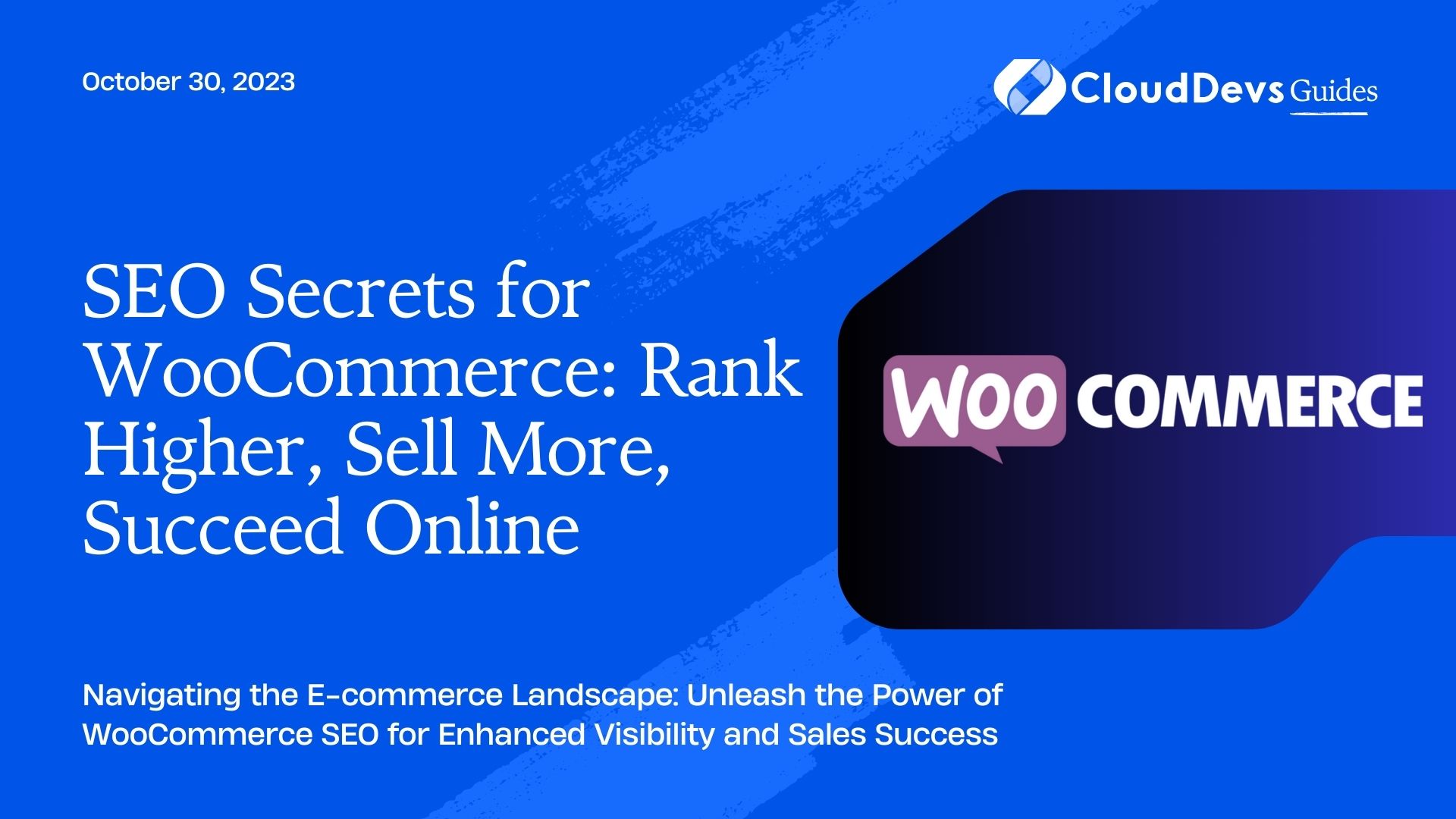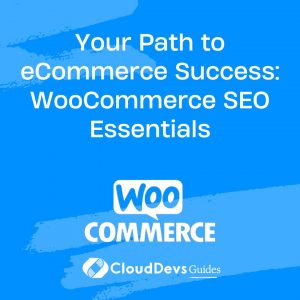SEO Secrets for WooCommerce: Rank Higher, Sell More, Succeed Online
In the fast-paced world of e-commerce, having a beautifully designed WooCommerce website is just the beginning. To truly succeed in the competitive online marketplace, you need to ensure that your site is easily discoverable by potential customers. This is where Search Engine Optimization (SEO) comes into play. SEO is the practice of optimizing your website to rank higher in search engine results, making it easier for users to find your products and services. In this blog post, we’ll explore some essential SEO tips for WooCommerce e-commerce websites to help you drive more organic traffic and increase your sales.
1. Keyword Research
Keyword research is the foundation of any successful SEO strategy. It involves identifying the keywords and phrases that your target audience is using to search for products or services similar to yours. Tools like Google Keyword Planner, SEMrush, or Ahrefs can be incredibly helpful in this regard. Once you’ve identified relevant keywords, incorporate them strategically into your product titles, descriptions, and metadata. Aim for a balance between high-volume keywords and long-tail keywords to capture a wider range of potential customers.
Example: If you’re selling handmade leather wallets, target keywords like “genuine leather wallet,” “handmade leather wallet,” and “high-quality wallet.”
2. Optimize Product Pages
Your product pages are the heart of your WooCommerce website. To maximize their SEO potential:
– Unique Product Descriptions: Avoid using manufacturer-provided descriptions. Craft unique, informative, and engaging product descriptions that highlight the benefits and features of your products.
– Optimize Images: Use high-quality images that load quickly and include descriptive alt text. This helps with both SEO and accessibility.
– Structured Data: Implement structured data markup (schema.org) to provide search engines with detailed product information. This can result in rich snippets in search results, which can boost click-through rates.
Example: If you’re selling eco-friendly cleaning products, ensure your product page includes structured data for each product, specifying attributes like price, availability, and customer reviews.
3. Mobile Optimization
Google prioritizes mobile-first indexing, meaning your website’s mobile version plays a crucial role in search rankings. Ensure your WooCommerce store is responsive and offers an excellent user experience on mobile devices. Google’s Mobile-Friendly Test can help you identify and fix any issues.
Example: Test your e-commerce website on various mobile devices to ensure that the shopping experience is smooth and intuitive.
4. Page Speed
Page speed is a crucial factor in SEO. Slow-loading pages not only frustrate users but also lead to lower search rankings. Use tools like Google PageSpeed Insights or GTmetrix to analyze and optimize your website’s loading times. Compress images, minify CSS and JavaScript files, and leverage browser caching to improve your site’s performance.
Example: A WooCommerce store selling fashion items should optimize images to reduce load times, especially on category pages with numerous product thumbnails.
5. User-Friendly URLs
Ensure that your product URLs are clean and user-friendly. Avoid using long strings of numbers or meaningless characters. Use descriptive words that reflect the product or category.
Example: Instead of “https://www.yourstore.com/product?id=12345,” use “https://www.yourstore.com/handmade-leather-wallet.”
6. Internal Linking
Internal linking helps search engines navigate your site and understand the hierarchy of your content. Link related products, categories, and blog posts within your website. This not only aids SEO but also keeps visitors engaged by providing additional relevant information.
Example: In a blog post about leather craftsmanship, link to specific leather products available in your store, creating a seamless connection between content and products.
7. Customer Reviews and Ratings
Encourage customers to leave reviews and ratings for your products. Positive reviews not only build trust with potential buyers but also contribute to your website’s SEO. Google often displays star ratings in search results, which can boost click-through rates.
Example: Implement a review system on your WooCommerce store and send post-purchase emails inviting customers to leave feedback.
8. Regularly Update Content
Fresh and up-to-date content is favored by search engines. Maintain a blog and regularly publish relevant articles, guides, or how-to content related to your products or industry. This not only attracts organic traffic but also positions your website as an authoritative source.
Example: If you sell gardening equipment, create a blog post about seasonal gardening tips and update it each year with new information.
9. Secure Your Website
Security is an essential aspect of SEO. Google gives preference to secure websites with SSL certificates (https://). WooCommerce websites deal with sensitive customer data, so ensuring a secure shopping experience is crucial for SEO and customer trust.
Example: Make sure your WooCommerce store is configured with a valid SSL certificate to secure customer data during transactions.
10. Monitor and Analyze
Regularly monitor your website’s performance using tools like Google Analytics and Google Search Console. Keep an eye on keyword rankings, organic traffic, click-through rates, and conversion rates. Use this data to make informed adjustments to your SEO strategy.
Example: If you notice that certain products or categories are underperforming, consider tweaking your keyword strategy or improving the product descriptions.
Conclusion
SEO is an ongoing process for WooCommerce e-commerce websites. By implementing these tips and staying updated with the latest SEO trends, you can enhance your website’s visibility in search results, attract more organic traffic, and ultimately boost your e-commerce sales. Remember that SEO is not a one-time effort but a continuous journey toward online success.
Table of Contents







